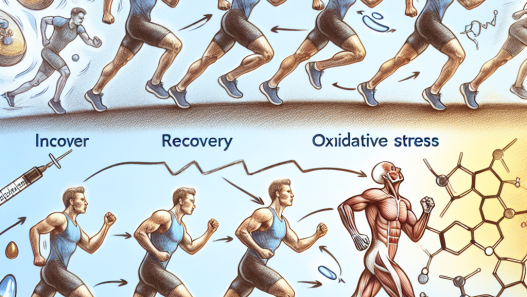-
Table of Contents
The Side Effects of Somatropin Use in Athletes
Somatropin, also known as human growth hormone (hGH), has gained popularity among athletes as a performance-enhancing drug. It is a synthetic version of the naturally occurring growth hormone produced by the pituitary gland. While it has been approved for medical use in treating growth disorders and certain medical conditions, its use in sports is considered illegal and unethical. Despite this, many athletes continue to use somatropin in hopes of gaining a competitive edge. However, the use of somatropin comes with a range of potential side effects that athletes should be aware of.
The Pharmacokinetics and Pharmacodynamics of Somatropin
In order to understand the potential side effects of somatropin, it is important to first understand its pharmacokinetics and pharmacodynamics. Somatropin is typically administered through subcutaneous injections and has a half-life of approximately 20-30 minutes. This means that it is quickly absorbed into the bloodstream and has a short duration of action. However, with repeated use, the body can develop a tolerance to somatropin, requiring higher doses to achieve the desired effects.
The pharmacodynamics of somatropin involve its interaction with the body’s growth hormone receptors. When somatropin binds to these receptors, it stimulates the production of insulin-like growth factor 1 (IGF-1), which is responsible for the growth-promoting effects of somatropin. However, this also means that somatropin can have effects on other tissues and organs in the body, leading to potential side effects.
Potential Side Effects of Somatropin Use in Athletes
The use of somatropin in athletes has been linked to a range of potential side effects, both short-term and long-term. These include:
- Acromegaly: Prolonged use of somatropin can lead to an overgrowth of bones and soft tissues, resulting in a condition known as acromegaly. This can cause changes in facial features, enlarged hands and feet, and joint pain.
- Cardiovascular effects: Somatropin can increase the risk of cardiovascular disease by causing an increase in blood pressure and changes in lipid levels.
- Metabolic effects: Somatropin can also affect the body’s metabolism, leading to an increase in blood sugar levels and potentially causing or worsening diabetes.
- Musculoskeletal effects: While somatropin is often used to increase muscle mass, it can also lead to muscle and joint pain, as well as an increased risk of fractures.
- Psychological effects: The use of somatropin has been linked to mood changes, including increased aggression and irritability.
These are just some of the potential side effects of somatropin use in athletes. It is important to note that the severity and likelihood of these side effects can vary depending on the individual and their dosage and duration of use.
Real-World Examples of Somatropin Use in Sports
The use of somatropin in sports has been a controversial topic for many years. While it is banned by most sports organizations, some athletes have still been caught using it. One notable example is former Major League Baseball player Alex Rodriguez, who admitted to using somatropin during his career. In addition, several high-profile athletes have been accused of using somatropin, including Olympic sprinter Justin Gatlin and professional cyclist Lance Armstrong.
These examples highlight the prevalence of somatropin use in sports and the potential consequences for athletes who choose to use it. In addition to the potential side effects, the use of somatropin can also result in disqualification from competitions and damage to an athlete’s reputation.
Expert Opinion on Somatropin Use in Athletes
According to Dr. Mark Jenkins, a sports pharmacologist and professor at the University of British Columbia, the use of somatropin in sports is not only unethical but also dangerous. In an interview with the New York Times, he stated, “There is no evidence that it enhances performance, and there are significant risks associated with its use.” (Schwarz, 2007)
Dr. Jenkins also emphasized the importance of educating athletes about the potential risks of somatropin use and the need for stricter testing and penalties for those who are caught using it. He believes that the use of somatropin in sports is a serious issue that needs to be addressed by sports organizations and governing bodies.
Conclusion
In conclusion, the use of somatropin in sports comes with a range of potential side effects that athletes should be aware of. These include acromegaly, cardiovascular effects, metabolic effects, musculoskeletal effects, and psychological effects. While it may be tempting for athletes to use somatropin in hopes of gaining a competitive edge, the risks far outweigh any potential benefits. It is important for athletes to prioritize their health and well-being and to avoid the use of performance-enhancing drugs like somatropin.
References
Schwarz, A. (2007). Baseball’s Biggest Contract Is Signed by Rodriguez. The New York Times. Retrieved from https://www.nytimes.com/2007/12/13/sports/baseball/13cnd-rod.html


















